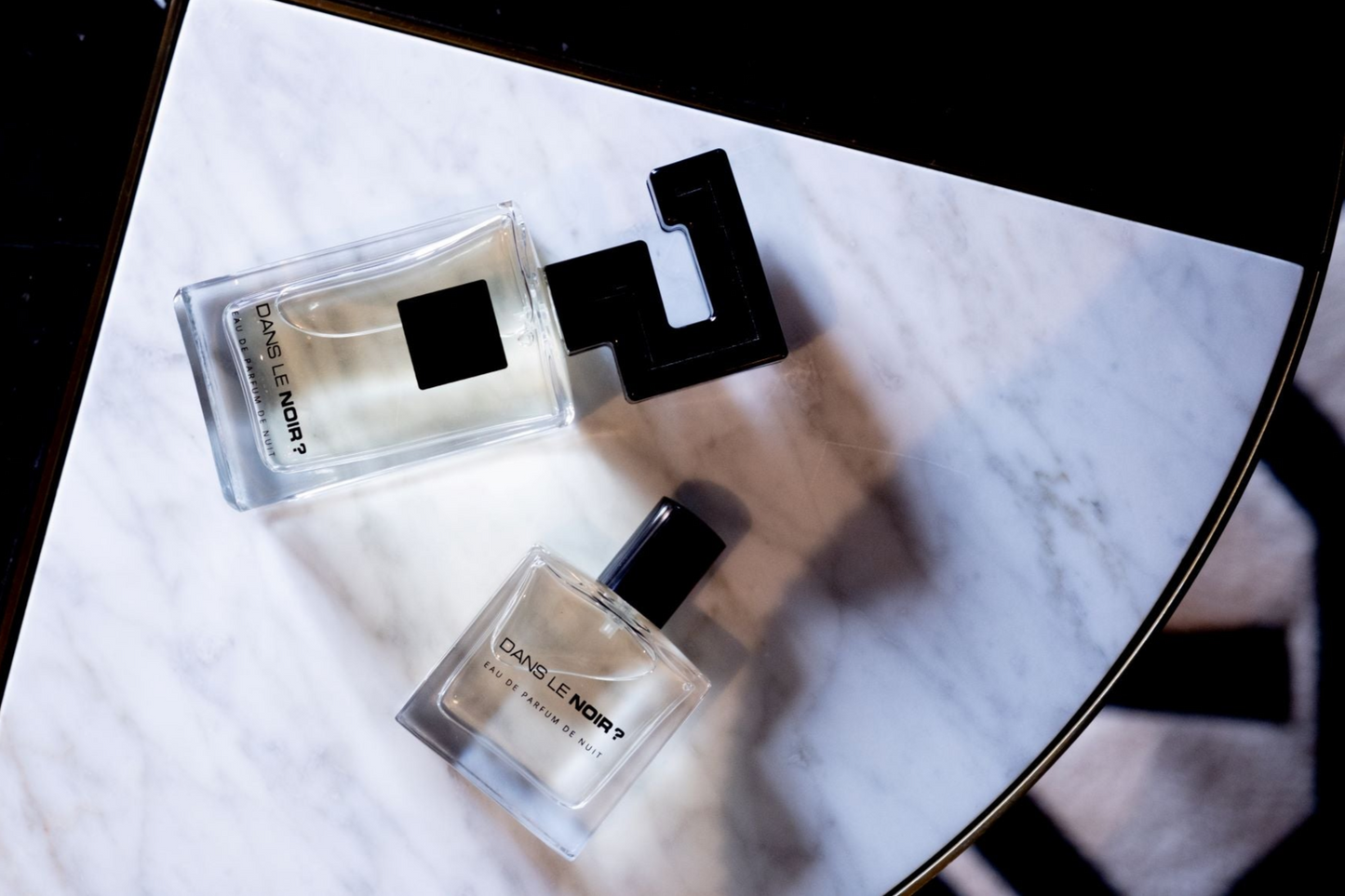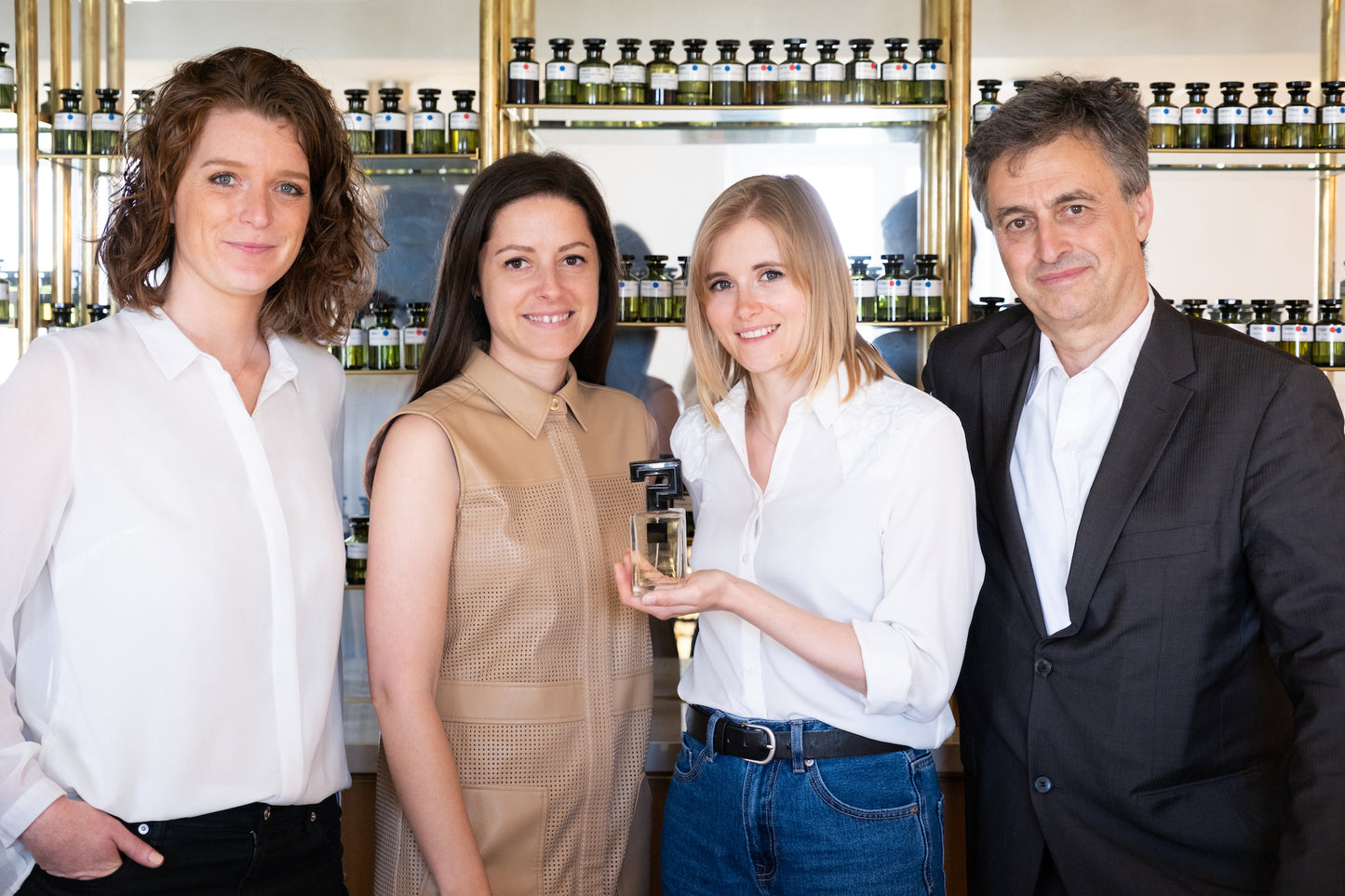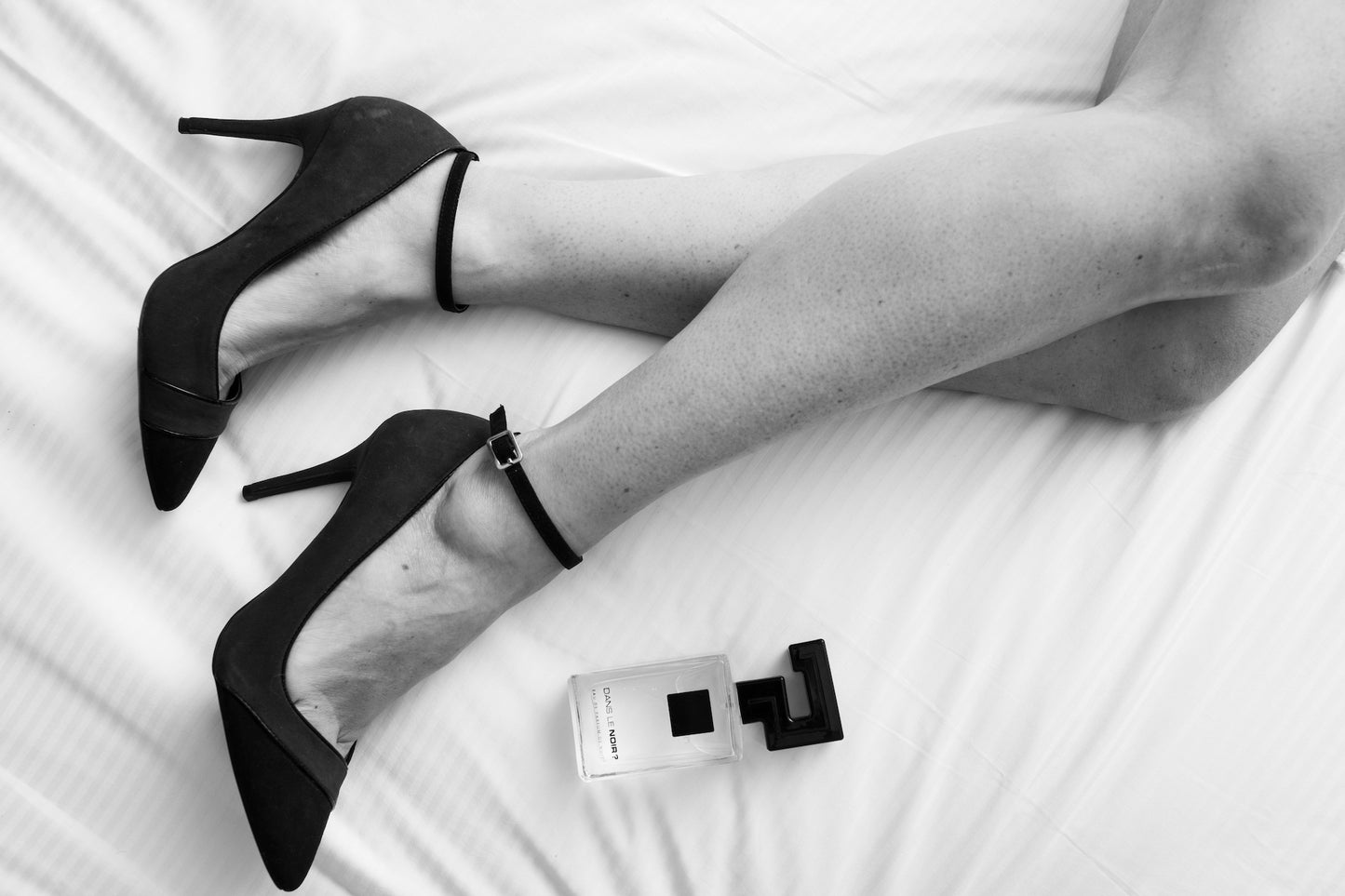
We spontaneously associate wearing perfume with daytime, the outdoors, and encounters. A gesture designed to complement an outfit, a mood, an occasion. But there is another moment, more discreet, more intimate, when perfume can be used: in the evening, just before going to sleep.
Long considered a refined ritual, sleeping with perfume is today a forgotten practice, or considered superfluous. However, this almost secret gesture conceals an unsuspected sensory power. Applying a few drops of perfume to bare skin or to the sheets before going to bed is not only prolonging a trail: it is preparing the body and mind for rest , creating an emotional climate conducive to relaxation , ritualizing the transition between the tumult of the day and the calm of the night.
In a world that values efficiency, these types of subtle and silent gestures are now taking on their full meaning. They are becoming moments of refocusing , practices of well-being , sensory cocoons where the fragrance is there to seduce, but also to accompany, reassure, and envelop.
This article explores this forgotten ritual , its emotional dimension, its benefits, and the fragrances that lend themselves to it. It also highlights the emergence of creations designed for this special moment, like the Parfum de Nuit Dans le Noir?, designed as a soothing scent for the skin, the body, and the moment.
Where does the ritual of sleeping with perfume come from?
While sleeping with perfume may seem unusual, almost superfluous, today, there was a time when this gesture was common, almost codified. In many cultures, perfume was an integral part of the nocturnal sphere , of intimacy, of the ritual of preparing for sleep or the night.
In ancient times, the Egyptians already used scented oils applied to the body to aid rest and promote dreams. The Greeks and Romans burned resins in their bedrooms, considering the scent to be an invisible protection against sleep . Later, in the Middle Ages, some European elites slipped lavender sachets or pieces of amber into their pillows, convinced that the scents promoted restful sleep and warded off “miasmas.”
In modern times, particularly in the 18th and 19th centuries, wearing perfume before bed was a symbol of refinement . High-society women applied delicate perfumes—often floral, powdery, or musky—to their skin, hair, or bed linen to maintain an “olfactory presence” even in the intimacy of the night.
But with the 20th century, the function of perfume shifted. It became an outward sign, an olfactory slogan of the individual in public space . The evening gradually lost its rituals. The use of perfume was concentrated on social, active, visible hours. The night, however, remained bare, or almost.
Today, however, this gesture is making a comeback. Not as a return to a bygone art of living, but as a reappropriation of the intimate.
Sleeping with a scent means reconnecting with a more instinctive, more tender relationship with one's body, one's space, one's rhythm. It means giving perfume back its primary place: that of a sensory connection with the living, with oneself, with one's sensuality and one's sleep.

Why wear perfume before going to sleep?
Applying perfume before going to sleep is an almost invisible gesture. It doesn't respond to any social injunction, it isn't addressed to anyone other than oneself. And that's precisely what gives it its power: it embodies a moment of pure sensory intimacy , a silent connection between the skin, emotion, and the need for comfort.
Certain scents have the power to regulate mood , calm mental agitation , or reassure . They act directly on the limbic system, the brain's emotional center. By breathing in a sweet, familiar, enveloping scent, the body receives a relaxation signal, almost reflexive.
This evening fragrance then becomes a transition ritual . It marks the passage from the visible to the invisible, from day to night, from tension to abandonment. Applied slowly, on the wrists, the collarbone, the sheets or even in the air of the bedroom, it installs a specific emotional atmosphere , a bubble of calm in which the body can relax.
But beyond the neuro-sensory aspect, there is the pleasure of the gesture . The choice of perfume. The suspended moment where we refocus on ourselves, where we create an environment that resembles us. It is not so much a functional reflex as an act of care, of presence, of gentleness.
The fragrance then becomes an extension of touch, an invisible caress , a silent warmth that inhabits the room and soothes the skin.
In an era where rituals are fading, where we rush to sleep, rediscovering this type of gesture, slow, intimate, enveloping, is a form of reconciliation: with one's body, with the night, with oneself.
On the skin, on the sheets, in the air: the three scented gestures of the evening
Sleeping with perfume isn't just a one-size-fits-all approach. This deeply personal ritual can be adapted to suit your desires, needs, or desired ambiance. It's not a fixed routine, but a free sensory practice that everyone can make their own.
On the skin: an intimate dialogue
Applying perfume to bare skin at bedtime is undoubtedly the most direct and sensual gesture. The body's natural warmth subtly diffuses the notes, creating a discreet, almost imperceptible, but deeply enveloping trail .
Some choose the wrists, others the nape of the neck, the inside of the elbows or the décolleté. Where the skin is thin, receptive, delicate. The perfume then becomes a reassuring presence , an extension of touch. It accompanies falling asleep like an invisible whisper.
On the sheets: a room fragrance
Perfuming your bed linen is another ritual, more airy, but just as evocative. It's not about impregnating, but about depositing a light olfactory mist , which floats in the space, softens the atmosphere, and invites calm.
A few sprays on the pillow, the back of the duvet or the fitted sheet are enough to create a halo of comfort , a sensory atmosphere conducive to relaxation. The fragrance acts here like an invisible cocoon, an enveloping olfactory bubble.
In the air: a suspended mist
Finally, some people prefer not to perfume their skin or their textiles, but simply spray it in the air , above the bed, like a floating gesture. The perfume then becomes an element of the nighttime environment. It integrates into the subdued light, the silence, the rediscovered slowness.
This approach allows you to choose the intensity , adapt the space, and create an invisible but palpable setting. Scent becomes the central sensory element of a bedtime ritual—a way to gently bring night into the bedroom.

The example of the Night Perfume In the Dark?: an invisible, soothing and enveloping signature
Among the rare perfumes truly designed to accompany sleep, the Parfum de Nuit Dans le Noir? stands out as a unique creation. Not only by its name, which questions and invites, but above all by its design: conceived from the outset for the night, in the night, and for the senses.
Born from the sensory universe of Dans le Noir?, a pioneer of immersive experiences in the dark, this perfume was developed using a unique method: blind tested, evaluated without visual interference , refined by visually impaired sensory experts, in a quest for pure olfactory authenticity.
The result is a fragrance designed not to seduce, but to soothe, envelop, and reconcile. It unfolds like a fabric: soft, fluid, and intimate.
Its olfactory structure perfectly matches the codes of a night perfume:
- Deep and creamy sandalwood forms the backbone of the scent. It brings warmth, stability and grounding.
- The tonka bean , sweet and slightly almondy, reinforces comfort, without ever tipping into sweetness.
- Musky notes , close to the skin, evoke cleanliness, the warmth of a sheet, the cocoon of a delicate textile.
- A “silk” facet , almost tactile, gives the perfume an invisible but persistent texture. Like a fabric that hugs the body without constraining it.
It's a fragrance to wear on yourself, on light clothing, or to spray on the sheets, depending on the gesture that suits the moment. It doesn't seek to be noticed. It remains close, faithful, almost silent.
The Night Perfume In the Dark? embodies this new emotional perfumery : one that does not project outward , but invites one to return to oneself . It is the olfactory extension of a moment of calm. An invisible, but unforgettable signature.
What if sleeping with a scent was also a way to take care of yourself?
In an era that values performance and permanent exposure, invisible gestures take on a new value. Sleeping with perfume is not a futile luxury: it is an act of attention to oneself , a moment offered to the body to settle, to slow down, to breathe differently.
This discreet and intimate gesture marks an essential difference: it is not addressed to the world, but to oneself. Its purpose is not to introduce oneself, but to reconnect. It is a way of saying to oneself: I deserve a moment of calm, of beauty, of presence.
Applying perfume before going to sleep also means reconnecting with your body , not in a logic of appearance or correction, but in a logic of care, softness, sensation. It means feeling your skin, your breathing, your weight in the bed - and enveloping them in a chosen, loved, reassuring olfactory texture.
This ritual can be part of a larger routine: a hot bath, a few pages of a book, subdued lighting, a soft fabric. The scent then becomes a sensory thread , a signal that we allow ourselves to enter into another rhythm, to free ourselves from the noise of the day.
In this perspective, perfume is linked to care . It does not cure in the medical sense of the term. It treats emotion, fatigue, overflow. It is not visible. But it acts.
And perhaps this is its most precious form of luxury: to be there, without showing itself. To protect, without locking up. To accompany, without directing. To be that silent presence that says, every evening, that we deserve to be at peace.
Conclusion
Wearing perfume in the evening is not a fashion, nor a gesture of coquetry. It is a forgotten ritual , discreet, intimate, but deeply sensory. A gentle way to mark the end of the day, to signal to the body that it can relax, to the breath that it can slow down, to the mind that it can finally calm down.
Sleeping with perfume is reconnecting with a form of invisible luxury: that of self-presence, of listening to sensations, of emotional care. It is creating an interior atmosphere in which one feels good, protected, enveloped.
In this silent space, perfume no longer plays a social role. It becomes a companion. A reassuring imprint. An invisible breath, but deeply present.
Some perfumes, like the Parfum de Nuit Dans le Noir?, were born from this intuition. Designed for the evening, formulated for slowness, tested in the dark, they embody this new approach: an emotional, sensory, soothing perfumery , where the scent does not seek to seduce but to support.
What if, tonight, true luxury simply consisted of wearing perfume... for yourself?






